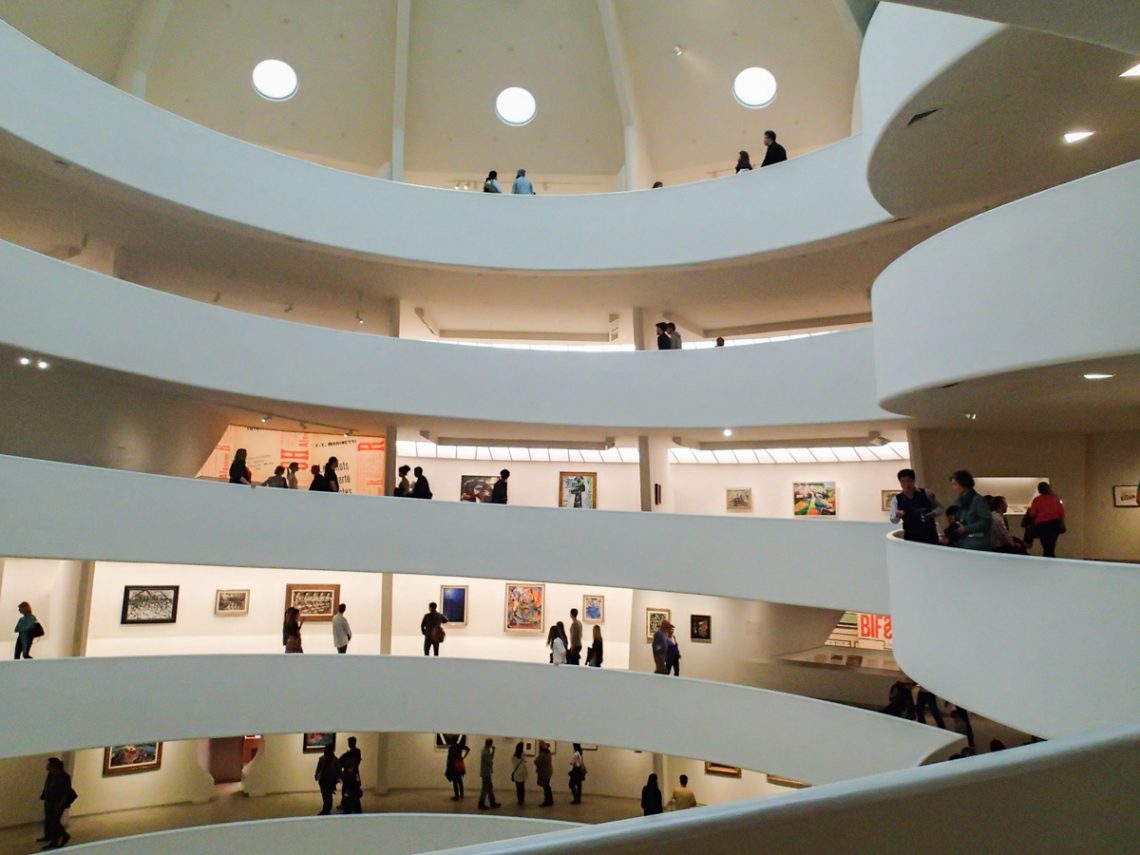UPPER EAST SIDE
(east of 5th Avenue, between 59th and 96th Street)
The city’s elite moved into this area at the turn of the last century and we can still see the millionaires’ mansions and their fur clad residents carrying their Pekingese pups. Some of the splendid beaux arts style buildings are now museums, luxury boutiques or embassies but upper class families also reside in these elegant houses.
This section of 5th Avenue houses several major museums. Here is the huge Metropolitan Museum, the Guggenheim, the Frick Collection, the Museum of the City of New York, the Jewish Museum, etc, etc. At least the first three are mandatory.
The Metropolitan Museum (corner of 82nd Street and 5th Avenue), which opened in 1870, is the largest in the city with its collection of 3.3 million art pieces. Don’t even try to fit it between two other activities, you must dedicate a day to it. Or more. Before you get lost among the scores of exhibition halls, it’s worth picking up a map at the Visitor Center by the entrance. The five major collections are: European paintings, American paintings, art of the Middle Ages, primitive art and the Egyptian collection. But you can find here the largest collection of Islamic art, the second largest Roman gallery after Athens, fantastic collection of musical instruments with the world’s oldest piano, the largest weapon collection of the Western world, and so on. It’s hard to pick something out from such a huge selection but I’d like to mention a few interesting facts. The 2000 years old Dendur temple was a gift from Egypt which arrived in 1965 taken apart down to stone pieces. It was put together in a huge light-filled room which was specifically built for this purpose. My other favourite is the Nur Ad-Din room which originates from a 1707 Syrian upper class house. There is a small fountain and comfortable pillows in the middle of the room. It’s very simple but splendidly elegant. For architecture fans I suggest to check out the reconstructed living room of Frank Lloyd Wright’s house. The exhibited art pieces are regularly changed so you can’t be sure to find all your favourites. If the weather is good, don’t miss the roof terrace where you can admire modern sculptures as well as the great view.
The Guggenheim (corner of 89th Street and 5th Avenue) is already a miracle from the outside – have a thorough look at the building before going in. The building resembles a corkscrew (other say a multilevel car park) and was built in 1959 after Frank Lloyd Wright’s designs (the only building in the city by the famous American architect). The first wow factor is by entrance when you look up to the upper floors from the atria. There are no stairs, only a slightly sloping spiral walkway from which small exhibition spaces open up. Those who don’t like climbing up, should take the elevator to the top floor and walk down from there (the exhibitions are organized that way anyway, the time line starts at the top). A few names to whet the appetite: Cezanne, Degas, Gauguin, Manet, Picasso, Van Gogh, Mondrian, Chagall, and here is the world’s largest Vasily Kandinsky collection.
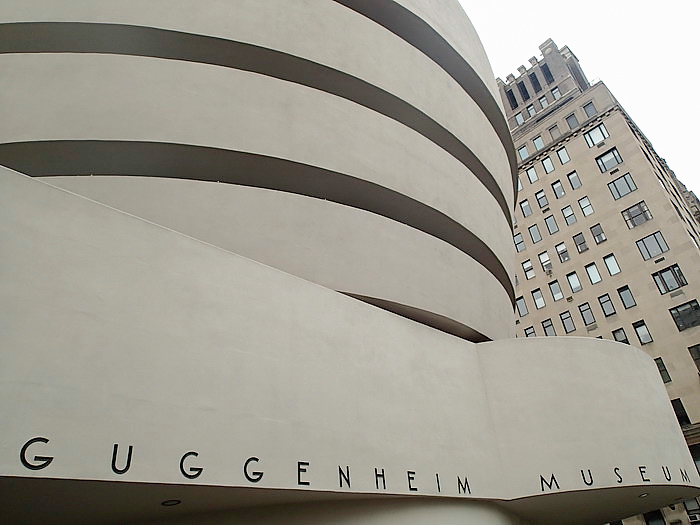

The Frick Collection (at the meeting of 70th Street and 5th Avenue) is a lovely little jewel-box. The Frick is the least museum-like museum. There are almost no ropes separating you from the art but there are comfy chairs where you can sit to gaze at the excellent paintings. The building of the Frick Collection is the white marble mansion of Henry Clay Frick, a steel magnate from Pittsburgh who collected a fairly mixed style of art. We can find European paintings from the 14-19th century, 18th century French and Italian Renaissance furniture or eastern china. As soon as you step into the building you can feel the really calm, peaceful atmosphere. Water splashes in the fountain in the middle of the arched courtyard and this beautiful little square might be the calmest oasis in the city. The pictures, sculptures are all radiating piece and joy. There are no paintings of battles or any aggressive themes but bright portraits and sunny landscapes. No jangle of voices will disturb your enjoyment of the art because guided tours are prohibited. The rule is that larger tourist groups can only go in by splitting into smaller groups of no more than ten people and children under ten are not allowed in. Keep your eyes open because every little nook contains interesting art. Don’t only look at the walls, glance down and notice the exquisite carpet. I just want to call attention to one piece: in the “Oval Room”, there are four life-size paintings craftily arranged – the women on the pictures do not look at any of the others or to the Diana bronze statue in the middle, and we also cannot look into their eyes. Besides enjoying the objects of art in the museum we can also get a feel for the opulent mansion and how a rich steel magnate lived in New York’s golden age.
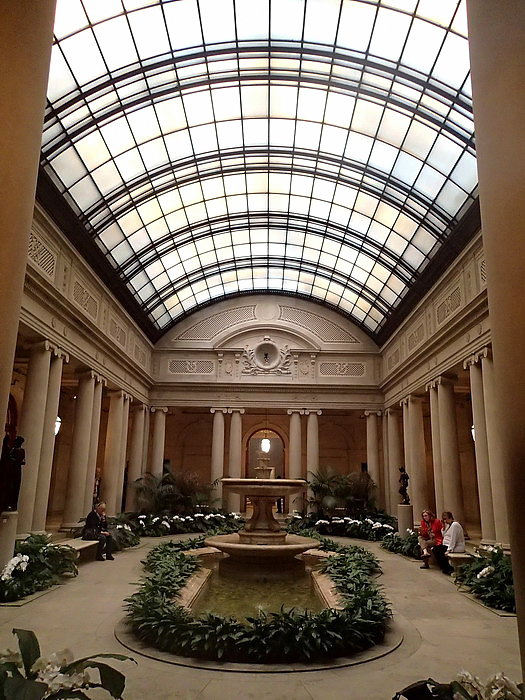

A bit further north, at the crossing of 5th Avenue and 86th Street stands the Neue Galerie New York which was founded by Ronald Lauder (whom we can thank for the splendid renovation of the Gundel Palace in Budapest) and an art dealer. The collection shows German and Austrian fine arts from the 20th century, and includes Klimt, Schiele, Klee and Kandinsky among others. There is a café on the ground floor which resembles old Viennese coffee houses.
Lovers of New York shouldn’t miss the Museum of the City of New York (at crossing of 103rd Street and 5th Avenue) where temporary exhibitions display the exciting happenings in the city – they don’t so much concentrate on the past as to its variety, possibilities, continuous transformation. But if someone is interested in the development of the city, they won’t be disappointed because there is a short film in the museum based on old maps that shows 400 years of history in 22 minutes.

The neighbouring Madison Avenue is the original base of the advertising business. Numerous advertising companies are located here as well as marketing professionals analysing consumer behaviour, so our tastes and habits are manipulated right here.
There is also a well-known museum at the meeting of Madison Avenue and 75th Street – the Whitney Museum of American Art with its reversed pyramid-like building, the place of 20th and 21st century American art. This is the best collection of the latest art trends and it has outgrown the building and getting a new home soon. The building is the genius work of Marcell Breuer. Even though the land space was very small he didn’t design the museum right next to the pavement but left an area for a small garden, originally for sculptures (now unfortunately the gift shop ruins the picture). The upper floors jut out, making the most of the space and also protecting the sculptures from rain.
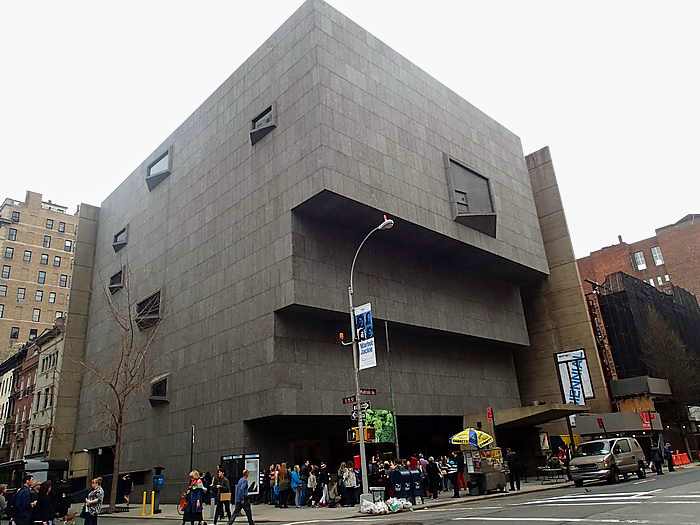
The area is full of very expensive boutiques and art galleries. If you want to try on the latest creations of Calvin Klein or Armani, you can do that in Barney’s New York on Madison Avenue between 60th and 61st Street. But let’s not be so materialistic since the country’s largest synagogue, the Temple Emanu-El is also here (corner of 5th Avenue and 65th Street).

There is a cute little museum on 63rd Street (between Park and Lexington Avenue), the Society of Illustrators. Although when reading the newspapers, I usually skim over the drawings, looking at them closely you can see how amazingly detailed they are.

The crossing of Lexington Avenue and E52nd Street is the location of one of the most iconic images in film history: Marilyn Monroe’s white dress was lifted up by the wind created by a passing train while standing above a grate right here.
At 77th Street, 96th Street and between Lexington Avenue and the East River is Yorkville, the Hungarian and German neighbourhood. The Hungarian church, St Stephen’s of Hungary, is at 414 82nd Street.
The legendary Püski bookstore, which was the bastion of samizdat literature for visiting Hungarians, has closed down, as have the two Hungarian butchers, Tibor Meat Specialities (1508 2nd Avenue) and the Yorkville Packing House (1560 2nd Avenue). There are different shops in their places now.
Only Andre’s Café is still open (corner of 2nd Avenue and 85th Street) but the waiters were so flip and impolite, and we can find those in Budapest as well, no need to search for them here.
The red cable cars leaving from the corner of 2nd Avenue and 59th Street will take us over the East River to Roosevelt Island. There isn’t much to see there but the view is excellent from the cabins. If you are scared of heights, you can also get to the island via the subway. The residents can’t complain, they live on a quiet and peaceful little island a few minutes from Manhattan.

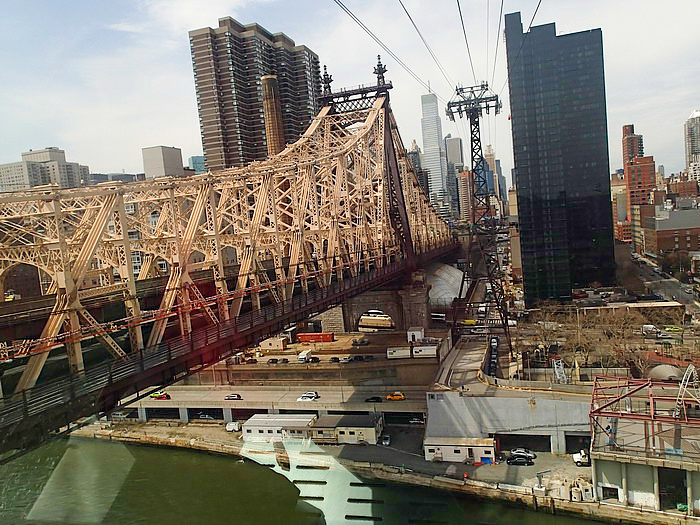
Lastly, a special confectionary curiosity: at 780 Lexington Avenue (by 60th Street) is the cupcake ATM of the Sprinkles Cupcake shop.

